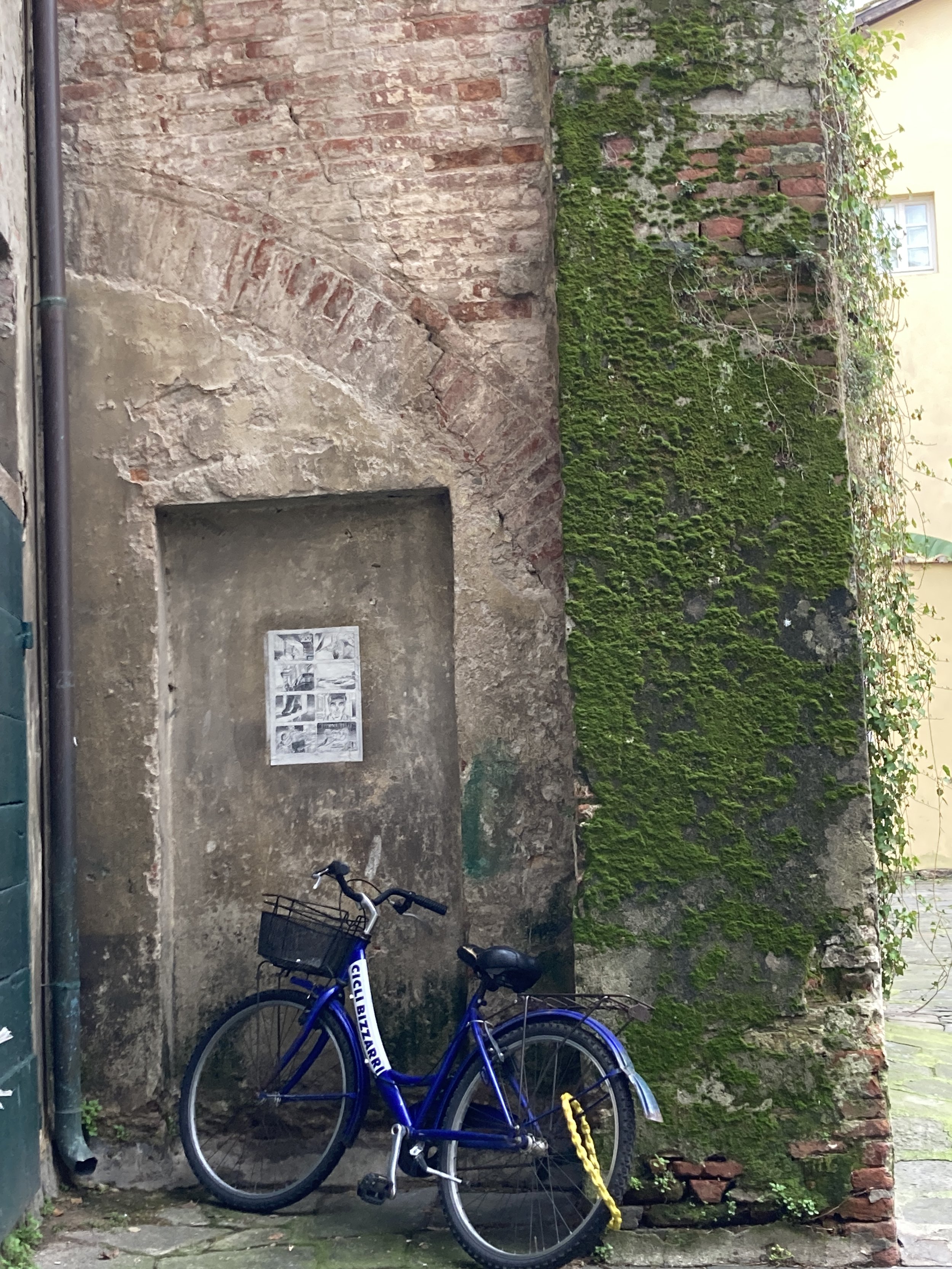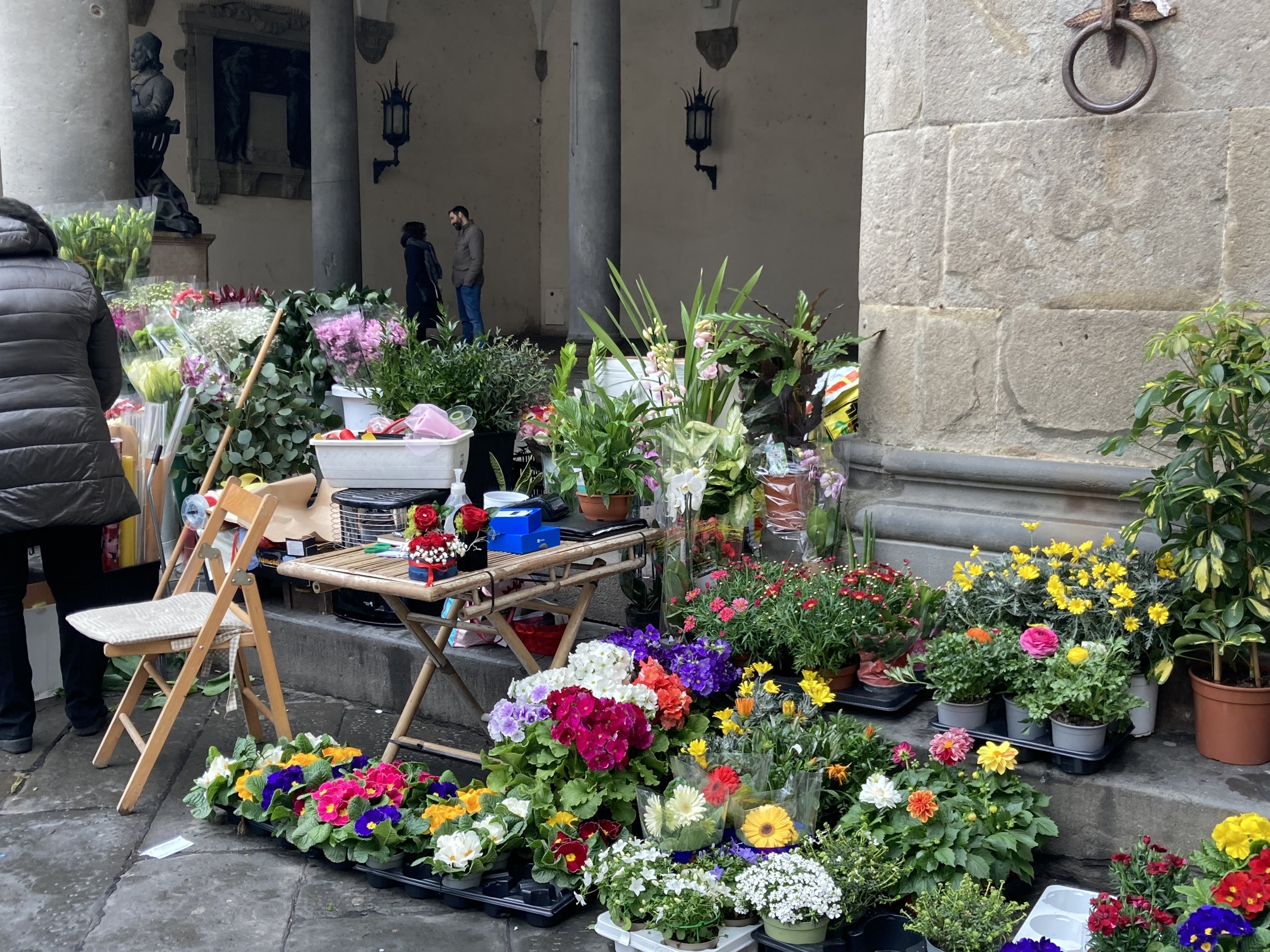Italy Travel 2022
Air Dolomiti, on my final leg from Munich to Florence
I’ve just returned to Italy after spending some time in the US visiting family, so it seems like a good time for a first (but surely not last) travel update for 2022.
The travel rules continue to change frequently, responding to increases and decreases in COVID cases and changes made by the Italian health authorities. This makes travel challenging and so rule #1 is to check the requirements frequently leading up to travel and daily in the last week before departure. In the last few months some changes have occurred overnight, effective immediately - such as the change in the timing of a pre-flight rapid covid test from 48 to 24 hours before arrival that took place in December. Imagine the stress of waking up on the day of travel to find out that the test you just did the day before was now not acceptable! The website salute.gov.it is a good source of accurate information. The US Embassy is another good source as are some of the airlines. I generally fly United and their “travel ready” site has done a nice job of informing me of the most current requirements.
I’m enjoying wandering around Lucca and seeing my favorite spots.
Italy is open for visitors but that does not mean that everyone is welcome or that all the rules have been relaxed. The Italian government creates lists of countries, based on a variety of factors, with rules specific to each group. Countries on list C (which includes most of Europe) can enter Italy with proof of vaccine. No COVID test needed. No self-isolation on arrival. I wish the US were on list C, but alas it is not.
The travel was a headache, but walking into my apartment building in Lucca made it all worthwhile!
List D (which includes the US, Canada, the UK, and Australia) has different requirements. Travelers from these countries may enter Italy with proof of vaccine (valid if the last dose in the initial series was within 6 months) or proof of vaccine plus a booster (valid indefinitely), or proof of recovery from COVID (valid for 6 months). In addition to vaccine or recovery, a negative COVID test is also required. The key here is that the negative test is timed to arrival in Italy (not to departure from home country). The test can be either an antigen (rapid) test taken 24 hours before arrival or a molecular (PCR) test taken 72 hours before arrival (arrivals from the UK, even though it is on list D, have to test within 48 hours). No self-isolation is required for those meeting these standards. Depending on where one lives, the availability and cost of testing can be an issue. Because it takes me about 20 hours to travel from New Mexico to Florence, a rapid test done at the airport the morning of departure would work, but cuts it too close for my comfort. For my flight last week I scheduled a PCR swab 72 hours before arrival (remembering to account for the 8 hour time difference between New Mexico and Italian time). But the expense! $149 for a next day result, $249 for a same day result (and really, don’t we all want the reassurance that we are cleared to travel as far ahead as possible?). Ouch!
What about the unvaccinated ? Well, Italy says they can come (though I wish they wouldn’t) IF they have a negative test, report to the local health authorities on arrival, self-isolate for 5 days, use only private transportation to get to the place where they will isolate, and have a negative test at the end of the 5 days. Unvaccinated persons can’t do much when they are in Italy, even after those five days, as they are not eligible for a “super green pass”.
Lucca’s Saturday flower market hints that spring is just around the corner
While in Italy, visitors, just like the locals, will be asked to present their green pass to enter most places - restaurants, museums, theaters, trains, buses, shops, etc. Tourists are not able to get the same EU green pass given to residents, but not to worry! Visitors can use a “green pass equivalent” which is a certificate issued by their national health authority which shows completion of an approved vaccine series at least 14 days prior to travel. For visitors from the US, the CDC card meets this requirement. However a card from a local pharmacy or other vaccine provider does not! It must be the official CDC card. Ideally, visitors should bring the original CDC card as well as a copy. It’s ideal to keep the copy on one’s smart phone where it can be easily retrieved. Storing it as the first entry in the iPhone notes makes it easy to retrieve !
Most confusing to visitors is that there are two levels of green pass. One, the basic pass, requires a negative COVID test within the last 48 hours. This is required to enter a bank, post office, hairdresser or barber - not the most useful places for tourists! And it is not a single test but rather 48 hours prior to each entry into a place where it is required. The basic green pass is not sufficient to enter restaurants, hotels, or most events and so having just the basic pass severely limits activities. A super (also called enhanced) green pass requires vaccination, it can not be obtained through testing alone. The super green pass is the golden ticket to enter restaurants, shops, hotels, trains, museums, etc. It is valid for 6 months after the initial vaccine series and indefinitely after a booster.
Covid rules aren’t the only things that change. This formerly upright art installation was deconstructed and hauled away while I was gone. Photo thanks to B. Plunkett, used with permission.
But …. right now all of these regulations are in place only through mid-March. And Italy’s years long state of emergency is also set to expire at the end of March. It is possible that one or both will be extended, or that they will be significantly changed. Rumors abound - most leaning towards an easing of requirements. My hope is that countries on the D list will once again require only vaccination (and boosters) but not COVID testing for entry into Italy (as was the case in Summer of 2021). Fingers crossed!
At this point there are two main factors for anyone to consider when deciding if the time is right for a trip to Italy. The first is vaccine status. Italy rewards the fully vaccinated & boosted by granting them freedom to do most things with only a few limitations (masks worn indoors, reasonable social distancing). We can even go to the movies and buy popcorn as of March 10th! On the other hand, an Italian vacation is nearly impossible for the unvaccinated. It just doesn’t make sense to travel here if unvaccinated.
The second factor is one’s personal tolerance for frustration and risk. Most everyone I know has found the travel requirements - filling out the EU Passenger Locator Forms (EUpLF), coordinating the timing of testing, uploading documents - frustrating at best and crazy making when they encounter glitches. For some travelers, that is enough to make them wait for a time when the requirements lessen. Others face these challenges with determination and happily head to Italy. For some would-be travelers the fear of contracting illness while traveling, and possibly being “stuck” in Italy until recovered, is too much. For them, this just isn’t the time for a trip. Others find the risk to be acceptable and staying away from Italy for even a moment longer to be torture - they book their flights, approach travel with a reasonable sense of caution, and enjoy their trips. Most of my friends fall into this group. I am expecting at least 4 groups of friends to visit this year, along with my daughter and a couple of grandchildren. Surely there is some sort of Girl or Boy Scout travel badge they can earn? Fingers crossed the travel rules get easier and not more complicated!
I try to keep up on all the changes, so look for future updates as things evolve. And I hope to see some of you in Lucca this year!
I arrived in Lucca just in time for the monthly antiques market - one of my favorite browsing activities.





